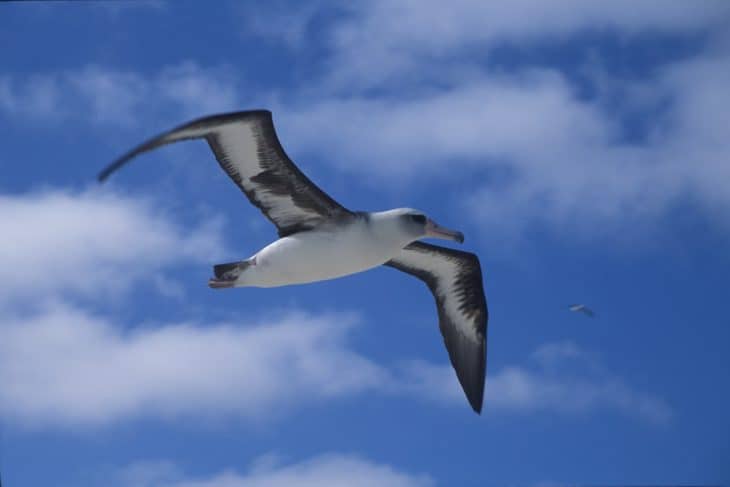
Not everyone will see an albatross in their lifetime. You can only find these unique animals in select locations across the world. However, that doesn’t mean they have to stay a mystery to you. Take a closer look at this bird with these albatross facts.
- Albatross of the biological family Diomedeidae has 22 species.
- As a long-living bird, albatross has a recorded age reached 50 years.
- Albatross has the largest wingspan among bird species, growing up to 6.5-11 feet.
- Albatross can fly as fast as 60 mph.
- Living at sea makes up over 80% of the life of an albatross.
- Naturally, the large bird albatross is a seabird.
- As a diurnal animal, albatross is active during the day.
- Most albatross habitats are in the Southern Hemisphere.
- Only 3 albatross species reside in the North Pacific.
- Their tameness on land earned albatrosses nicknames like ‘mollymawk’ meaning ‘foolish gull’ and ‘gooney.’
- Albatross, just like its fellow oceanic birds, drink seawater.
- Humans hunt albatross to use their feathers as an ornament for women’s hats.
- Tiger sharks, the main predators of albatross, typically hunt young birds still learning to fly.
- The Māori people used albatross wing bones in carving tattoos into their skin at ceremonies.
- The expression “to have an albatross around their neck” refers to people who are sad.
- Albatross has been regarded as the “most legendary of all birds.”
- An old myth states that shooting or eating an albatross would bring bad luck.
- Instead of flapping its wings for lift, albatross glides on air currents.
- An albatross can fly hundreds of miles without flapping its wings.
- Unlike others of their fellow sea birds, albatrosses can walk very well on land.
Albatross Facts Infographics
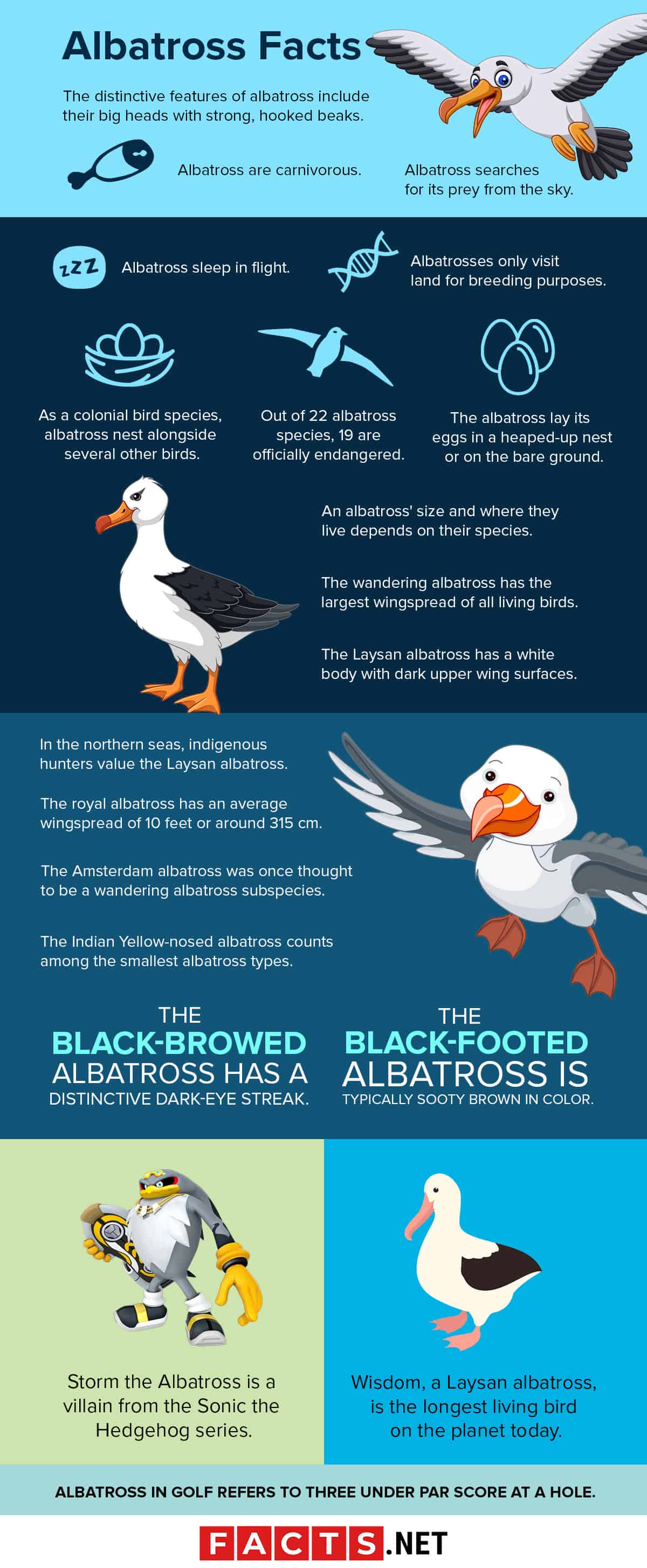
The distinctive features of albatross include their big heads with strong, hooked beaks.
These body parts come handy due to their diet of slippery prey. Moreover, the sharp blades on the side prevent the loss of their catch.
Albatross are carnivorous.
Albatross feed on marine animals such as crabs, fish, krill, and squid. However, albatross have become notorious among mariners as they would sometimes follow ships for chances of dining on handouts or garbage.
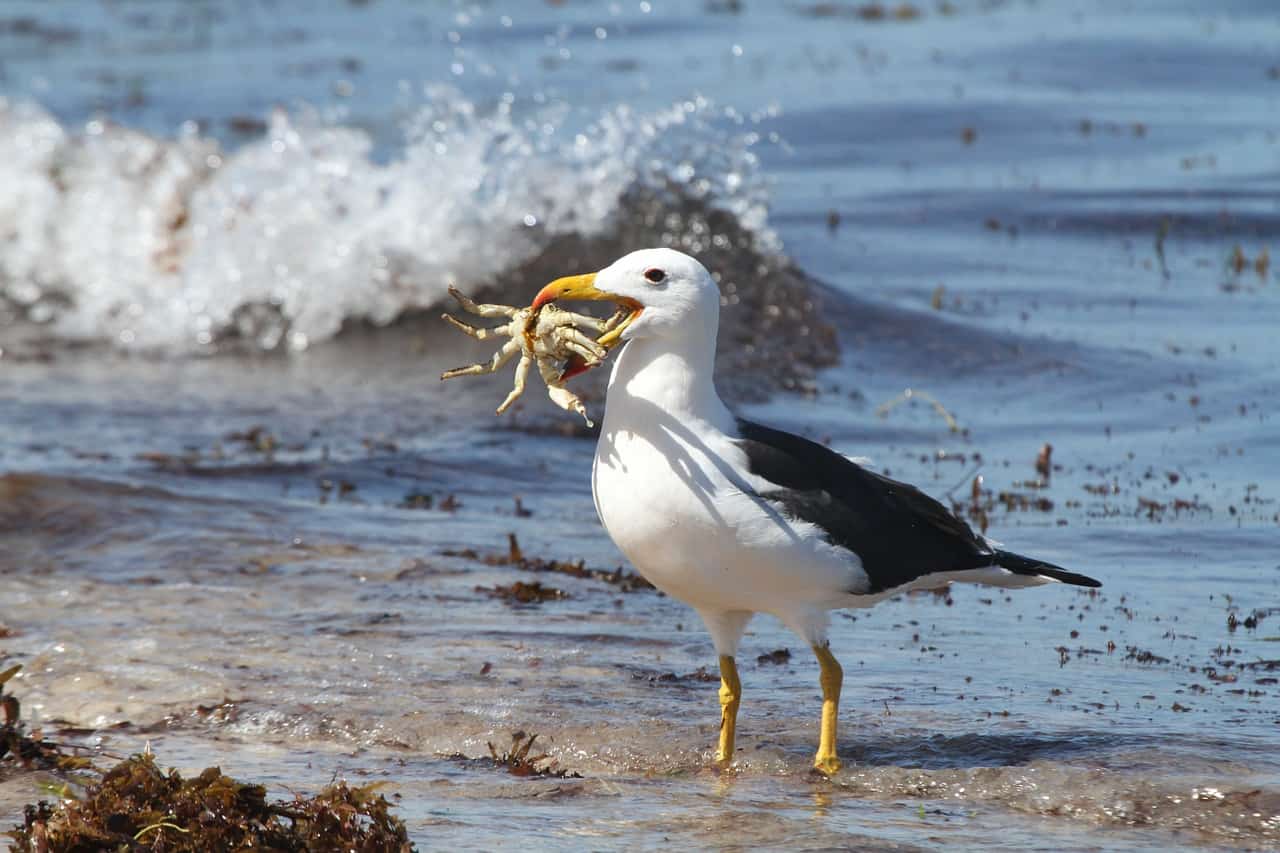
Albatross searches for its prey from the sky.
Once it has detected a potential target, the albatross would then rush toward the water and dive to grab it. Another way for albatross to catch prey is by locating it from the surface of the water.
Albatross sleep in flight.
It only started as a theory until a study by the Arctic Studies Center recently confirmed it. Findings also show that this bird species can sometimes sleep on the water. However, this position makes the albatross easy targets for natural sea predators and hunters in kayaks.
As a colonial bird species, albatross nest alongside several other birds.
Albatross typically nest on remote oceanic islands where male and female bonds form over several years through ritualized dances. Most of the time, these pairs last for a lifetime.
Out of 22 albatross species, 19 are officially endangered.
One of the reasons is the fishing industry, where birds end up trapped in the fishing nets. In other cases, a decrease in their natural prey introduces invasive species who in turn eat eggs and young birds. Another unfortunate reason is massive hunting.
Albatrosses only visit land for breeding purposes.
They usually establish their colonies on remote oceanic islands. Moreover, their mating rituals include displays of stretching wings and fencing bills with complementary loud groaning sounds.
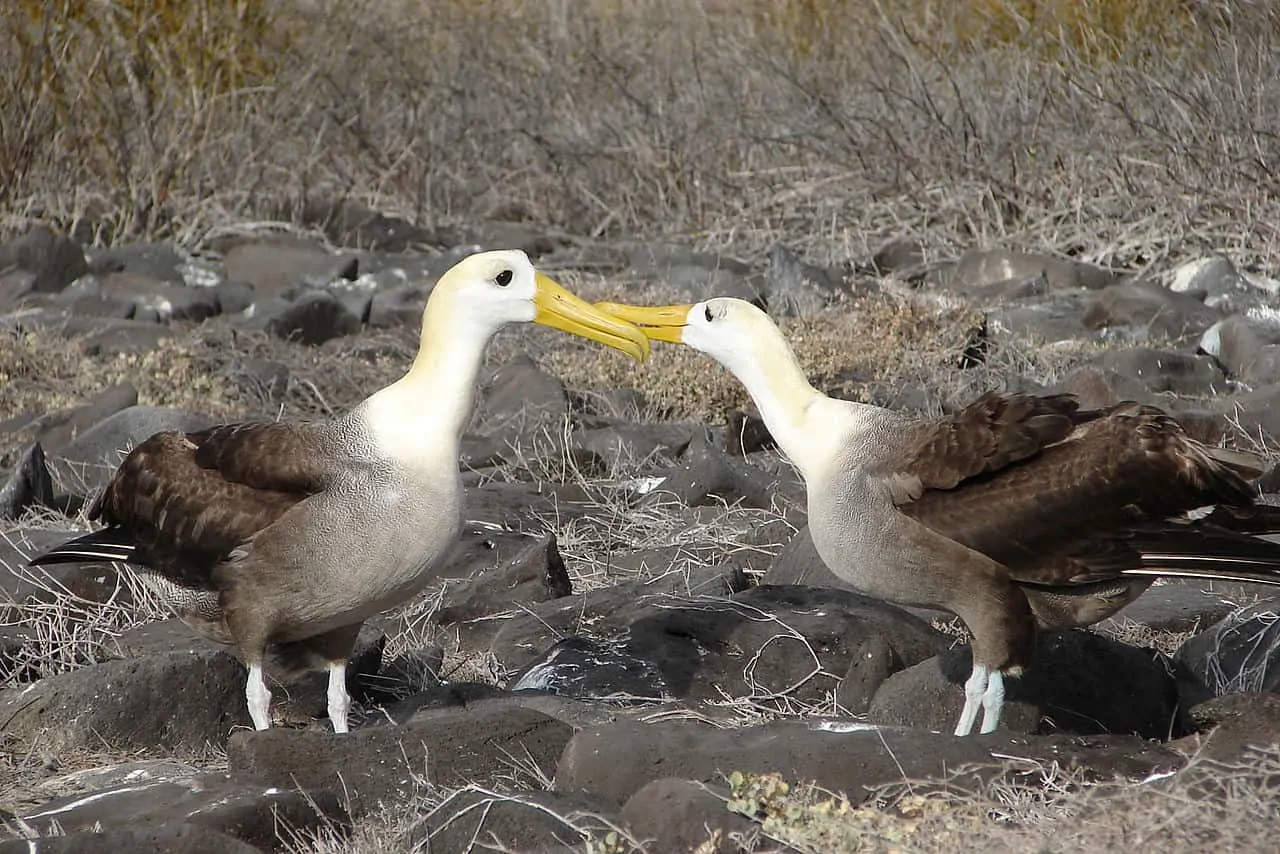
The albatross lay its eggs in a heaped-up nest or on the bare ground.
Parenting albatross would take turns incubating their single large white egg. A young albatross has a slow growth where they attain flight plumage at 3-10 months, taking much longer for larger species.
An albatross' size and where they live depends on their species.
In general, albatross can grow up to 35-51 inches long and can weigh up to 17-22 pounds.
The wandering albatross has the largest wingspread of all living birds.
Its wing can grow over 11 feet or 340 cm. The wandering albatross nests on islands by the Antarctic Circle and by the South Atlantic. During its nonbreeding season, the wandering albatross roams the southern oceans.
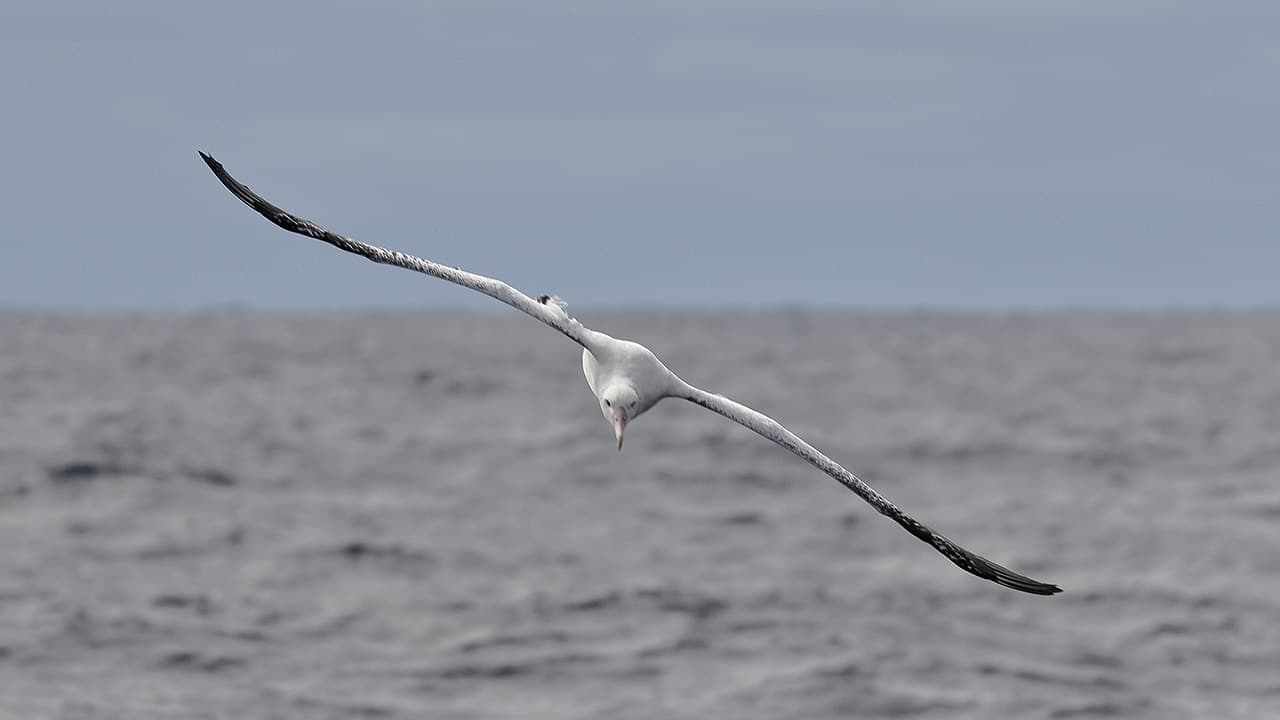
The Laysan albatross has a white body with dark upper wing surfaces.
The Laysan albatross’ wingspan can grow up to around 6 feet and has the same distribution as that of the black-footed albatross.
In the northern seas, indigenous hunters value the Laysan albatross.
Albatross bones excavated from Aleut and Eskimo settlements reveal that the human diet in that region largely involved Laysan albatross.
The royal albatross has an average wingspread of 10 feet or around 315 cm.
Breeding on the islands by New Zealand and around the southern tip of South America, the royal albatross are distinct for largely white bodies with black outer wing surfaces.
The Amsterdam albatross was once thought to be a wandering albatross subspecies.
However, a DNA analysis in 2011 proved otherwise. The Amsterdam albatross turned out to be a different species from the Nouvelle Amsterdam island in the southern Indian Ocean. Unfortunately, this species is officially a single critically endangered population with only around 170 individuals left.
The Indian Yellow-nosed albatross counts among the smallest albatross types.
The Indian yellow-nosed albatross can weigh up to 2.55 kg or 5.6 lb and grow up to 30 in or 76 cm. Its wingspan only grows around 6.6 ft or 2 m.
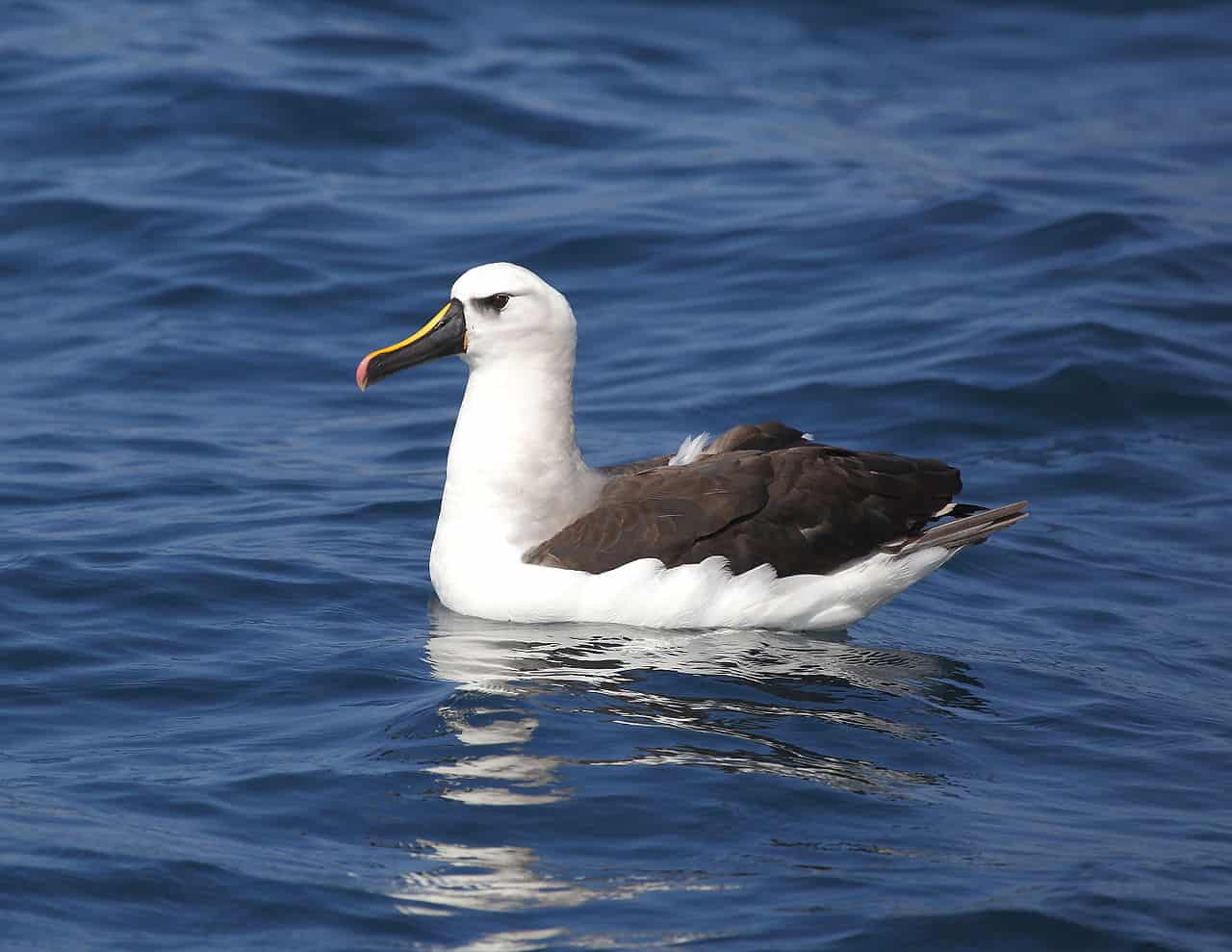
The black-browed albatross has a distinctive dark-eye streak.
While it is unique, this feature gives the black-browed albatross a frowning appearance. The black-browed albatross has a wingspan of around 7.5 feet or 230 cm and resides around the offshores of the North Atlantic.
The black-footed albatross is typically sooty brown in color.
It counts among the 3 North Pacific species, nesting on the tropical Pacific islands and wandering widely throughout the North Pacific. The black-footed albatross has a wingspan of around 6.5 feet or 200 cm.
Wisdom, a Laysan albatross, is the longest living bird on the planet today.
She was ringed as a mature adult in 1956 which makes her at least 67 years old. Moreover, Wisdom holds the record for being the oldest confirmed wild bird, the oldest banded bird in the world, and the oldest recorded albatross.

Storm the Albatross is a villain from the Sonic the Hedgehog series.
Albatross aren’t all that bad in real life, but they are for the Sonic video games. A member of the Babylon Rogues, Storm’s rivals are Big, Knuckles, Omega, and Vector. Storm the albatross might be a villain, but he would sometimes heroically team up with Sonic and friends with the goal of defeating other villains.
Albatross in golf refers to three under par score at a hole.
In the U.S., the albatross in golf is also known as a ‘double-eagle.’ This scoring term proves to be extremely difficult to achieve that most golfers never had the fortune to accomplish. Albatross golf can only be achieved with three strokes under par on a single hole.
Was this page helpful?
Our commitment to delivering trustworthy and engaging content is at the heart of what we do. Each fact on our site is contributed by real users like you, bringing a wealth of diverse insights and information. To ensure the highest standards of accuracy and reliability, our dedicated editors meticulously review each submission. This process guarantees that the facts we share are not only fascinating but also credible. Trust in our commitment to quality and authenticity as you explore and learn with us.
